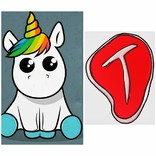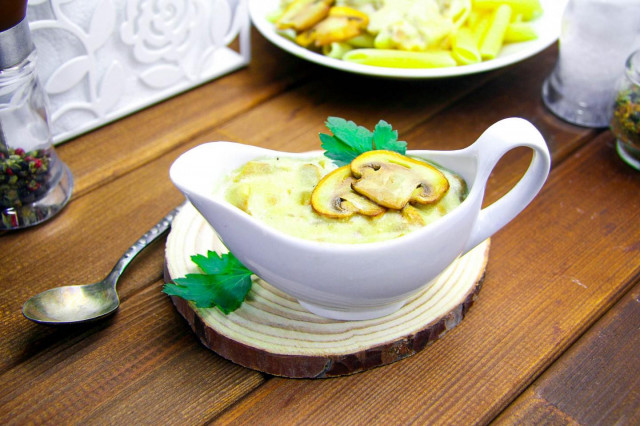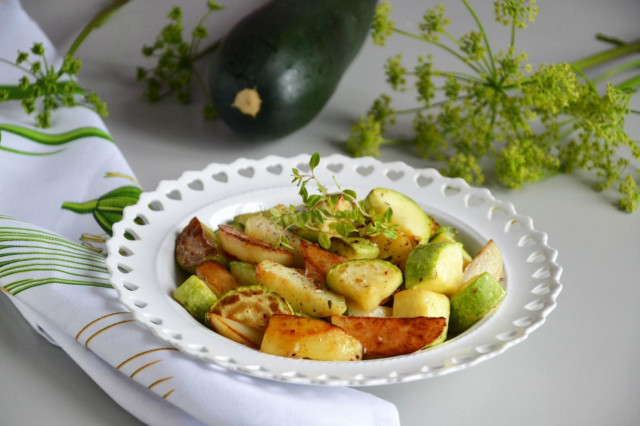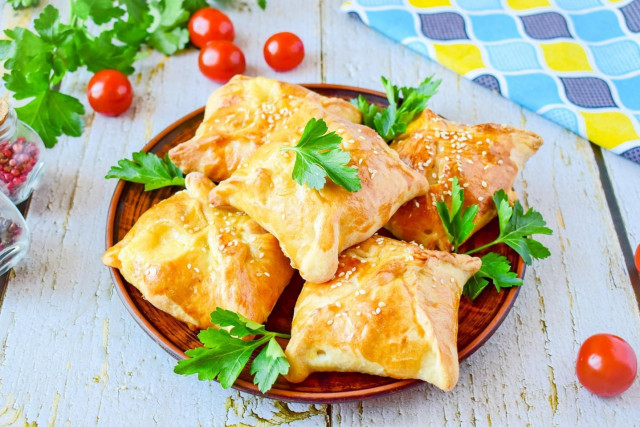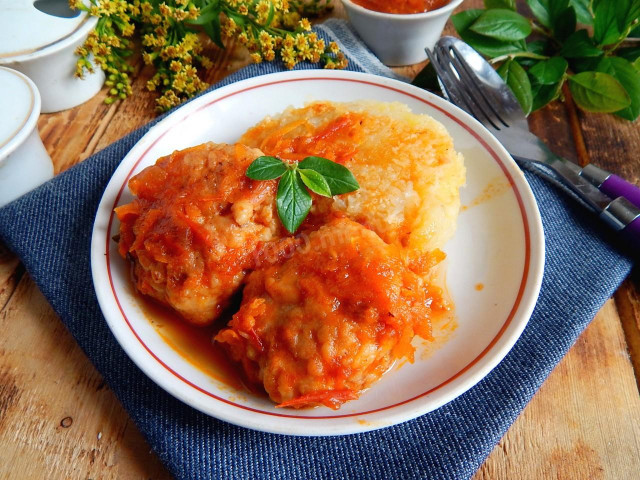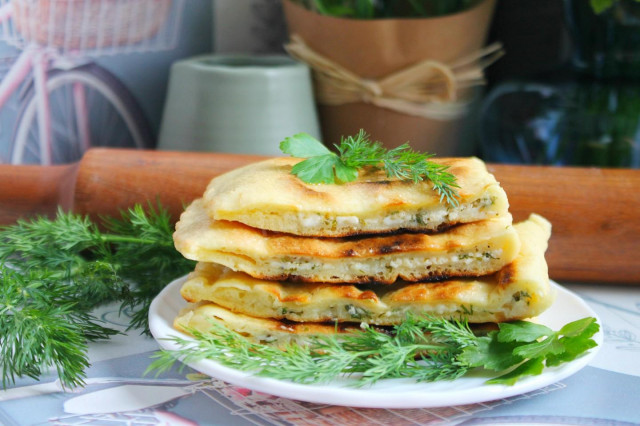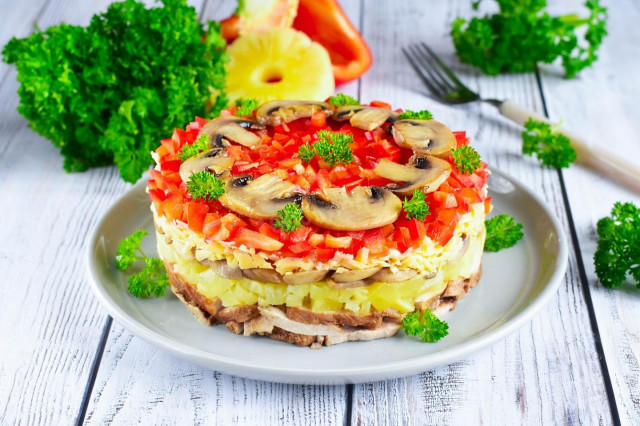Composition / ingredients
Step-by-step cooking
Step 1:
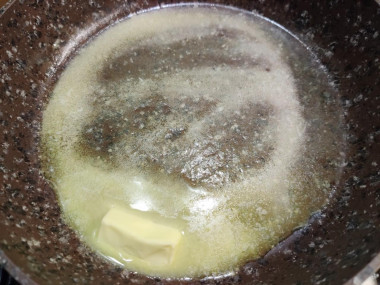
How to make mushroom sauce with sour cream? Prepare the products. You can take any mushrooms, not just champignons. Sort them out in advance, wash and dry them. Peel the onion from the husk and cut into small cubes. Heat the frying pan over high heat. Add the butter to the pan and melt it.
Step 2:
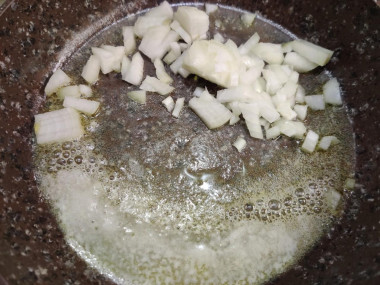
Fry the chopped onion in butter over medium heat until transparent. Stir it with a spatula during the frying process so that nothing burns. You can adjust the fire to fit your stove.
Step 3:
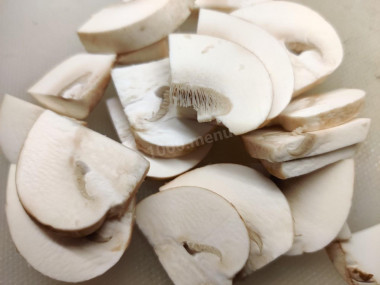
Cut off the dried tip of the leg from the champignons. Chop the mushrooms into thin slices. But since we are still preparing the sauce, you can chop them more finely or chop them in a blender at all - at your choice. But I advise you to do it after frying.
Step 4:
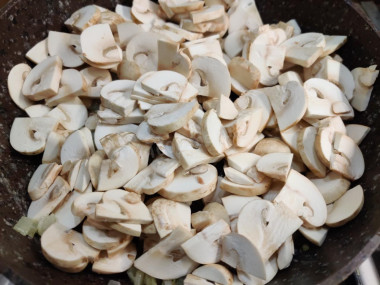
Put the champignons in a frying pan and fry them for about 5-7 minutes. The excess liquid should completely evaporate, if any. I had very little liquid in the mushrooms. Stir the mushrooms during the frying process without leaving the stove.
Step 5:
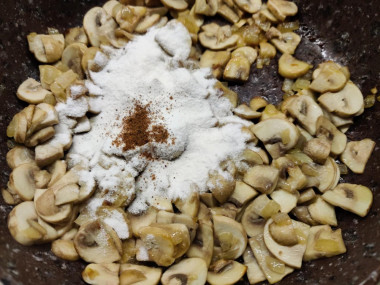
When the mushrooms acquire, to your taste, a sufficient degree of ruddiness, add wheat flour and a pinch of ground nutmeg to the pan for flavor. Add salt and pepper to taste. Mix the mushrooms thoroughly.
Step 6:
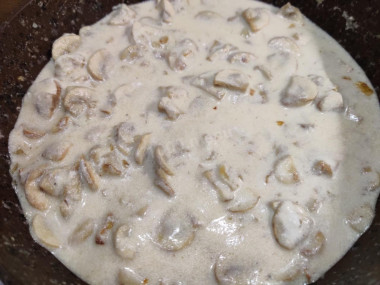
Add all the sour cream and a small amount of water to the mushrooms. Mix it up. Bring the sour cream to the first signs of boiling (until the first bubbles appear) and immediately remove the pan from the heat. Serve the sauce, seasoning it with fresh herbs.
The sauce turns out thick, with sour cream sourness and a slight hint of nutmeg (the main thing is not to overdo it) and is very rich in the taste of champignons.
If desired, mushrooms in the finished sauce can be crushed using an immersion blender. But I like it better when the mushrooms are felt in the sauce.
Instead of wheat flour, you can use any gluten-free flour: for example, rice or quinoa flour.
It is also good that the degree of density of the sauce can be varied to taste by adding or, conversely, reducing the amount of water.
Note that it is better not to store this sauce (although it will withstand storage in the refrigerator for one or two days pretty well).
After cooling, a rather unappetizing dense film appears on the surface of the sauce, which, nevertheless, disappears when reheated.
So it's better to make the sauce in small batches according to the number of servings.
I wish you a pleasant appetite!
So that the mucous membrane of the eyes is not irritated when slicing onions, rinse the onion and knife with cold water. The cutting board will not absorb the unpleasant onion smell if you rub it with a piece of lemon before slicing.
Buy fresh mushrooms of medium size, snow-white color without spots, damage, rot smell. They should not be slippery to the touch. Thoroughly rinse the mushrooms from the ground under a stream of warm or cold water. Cut out the damaged places, if there are any. Miniature mushrooms up to 2 cm in size do not need to be cleaned at all, it is enough to rinse them well. Larger champignons are recommended to be cleaned from films.
For cooking, it is better to use filtered or bottled water that is neutral to taste. If you use tap water, keep in mind that it can give the dish an unpleasant characteristic taste.
Caloric content of the products possible in the composition of the dish
- Sour cream with 30% fat content - 340 kcal/100g
- Sour cream of 25% fat content - 284 kcal/100g
- Sour cream with 20% fat content - 210 kcal/100g
- Sour cream of 10% fat content - 115 kcal/100g
- Sour cream - 210 kcal/100g
- Champignons - 24 kcal/100g
- Butter 82% - 734 kcal/100g
- Amateur unsalted butter - 709 kcal/100g
- Unsalted peasant butter - 661 kcal/100g
- Peasant salted butter - 652 kcal/100g
- Melted butter - 869 kcal/100g
- Salt - 0 kcal/100g
- Water - 0 kcal/100g
- Onion - 41 kcal/100g
- Wheat flour - 325 kcal/100g
- Ground hot pepper - 21 kcal/100g
- Nutmeg - 556 kcal/100g
